This year, I read for relation. I began the year grieving the end of a close friendship. I end it living with a partner for the first time. Throughout these months, I’ve turned to story, as I always do, for advice about life, for models of family and togetherness. As I reflected on the year’s reading though, I started to think beyond the relationships described in books to consider the relationships between books. How do the books I read relate and speak to one another?
I read books in pairs. A poem interspersed with a few sections of a novel. An alternating pattern of one short story, one essay. These pairs are determined by the whims of my local library and the shelves of nearby booksellers. I rarely choose two books deliberately. But sometimes the pairs nonetheless feel revelatory, each book deepened by the themes and preoccupations of the other. Here are 2021’s more serendipitous accidental pairings.
 Morelia by Renee Gladman and excerpts from “The American Museum of Water” by Natalie Diaz (not yet released)
Morelia by Renee Gladman and excerpts from “The American Museum of Water” by Natalie Diaz (not yet released)
In both of these works, language creates architecture. Morelia describes a foreign city, which both is and isn’t also a book the narrator is trying to remember, a book the narrator is writing, and the process of writing itself. Natalie Diaz’s poem guides the reader through exhibits in the American Museum of Water, which include, “A dilapidated diorama. The mythical city of Flint, Michigan” and “Blueprints from another water restoration project.” Both works explore the edges of language and communication. In Morelia, the distance between narrator and audience is too great for shared meaning. Words break down. The narrator’s experience is one of isolation and alienation. “The American Museum of Water” also comments on alienation—the alienating effects of capitalism and settler colonialism. However, here the barrier to communication is equally one of forgotten intimacy:
I can’t tell you anything new about the river
you can’t tell a river to itself.
Intimacies by Katie Kitamura and The Door by Magda Szabó
 Two astonishingly propulsive narratives focused on power, love, and betrayal. One a novel about translation—Intimacies follows a translator working in The Hague at the International Court. One a novel in translation—I read the Len Rix translation of The Door. Both center settings haunted by war crimes. Both center women confronting shifts in their personal and professional lives that ask them to reconsider (or even remake) their very identities. Both left me wanting to better inhabit the nuanced motivations of the characters I write.
Two astonishingly propulsive narratives focused on power, love, and betrayal. One a novel about translation—Intimacies follows a translator working in The Hague at the International Court. One a novel in translation—I read the Len Rix translation of The Door. Both center settings haunted by war crimes. Both center women confronting shifts in their personal and professional lives that ask them to reconsider (or even remake) their very identities. Both left me wanting to better inhabit the nuanced motivations of the characters I write.
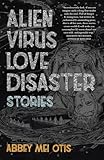
 Alien Virus Love Disaster by Abbey Mei Otis and Dhalgren by Samuel Delany
Alien Virus Love Disaster by Abbey Mei Otis and Dhalgren by Samuel Delany
Meditations by two queer writers on possible future worlds. Both writers are deeply invested in the ways we relate to each other and the patterns of unjust societies. In Alien Virus Love Disaster, characters create and bolster their varied configurations of family in response to environmental inequality and marginalization. In Dhalgren, a nameless narrator who cannot remember his history joins, and eventually leads, a community of young people attempting to survive in the isolated, forgotten, strange world of Bellona. Both books invoke strangeness and disorientation as a means of clarifying the engines of oppression.

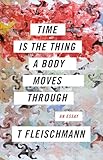 The Death of Vivek Oji by Akwaeke Emezi and Time Is the Thing a Body Moves Through by T Fleischmann
The Death of Vivek Oji by Akwaeke Emezi and Time Is the Thing a Body Moves Through by T Fleischmann
Though Emezi is writing fictionally about a gender-diverse person in Nigeria and Fleischmann is writing a nonfiction account of their navigation of love and sex in a United States haunted by AIDS, both of these books track, through personal narrative, the human toll of government-sanctioned homophobia and transphobia. Both left me reeling, reflecting on the innovation possible within our relationships, on art as response to injustice, and on the effects of colonialism, Christianity, and the criminalization of queerness on two different continents.

 Evolution’s Rainbow: Diversity, Gender, and Sexuality in Nature and People by Joan Roughgarden and Sarahland by Sam Cohen
Evolution’s Rainbow: Diversity, Gender, and Sexuality in Nature and People by Joan Roughgarden and Sarahland by Sam Cohen
In Evolution’s Rainbow, Roughgarden rejects Darwin’s theory of sexual selection, tracing the ways in which this single theory has circumscribed our ability to observe and witness same-sex relationships and genderfluidity in the natural world (which is our world). The final section, which describes the experiences of gender-diverse people in other cultures, falls short because of its reliance on anthropological and sociological research. However, the book as a whole does important work identifying gaps in our understandings of gender. Sarahland offers a Technicolor fictional version of Roughgarden’s central ideas, tracking queer relationships and gender-diverse characters through a variety of settings—from a 21st-century college campus to a scene from the Torah to a future Earth inhabited only by sentient non-humans. Together, these books helped me to fully visualize the possibilities of queer ecological writing.

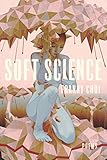 The Companion Species Manifesto by Donna Haraway and Soft Science by Franny Choi
The Companion Species Manifesto by Donna Haraway and Soft Science by Franny Choi
Two works by writers concerned with technoscience and the contemporary cyborg. Haraway writes The Companion Species Manifesto in answer to her previous work A Cyborg Manifesto. Feeling as though she’s come up against the outer limits of the cyborg as a semiotic tool, she “goes happily to the dogs.” Her book is a literal exploration of human relationships with dogs, asking what these connections reveal about America’s legacy of violence, companionship, and hierarchy. Franny Choi’s collection of poems also offers a response to A Cyborg Manifesto. The epigraph quotes it directly: “We are excruciatingly conscious of what it means to have a historically constituted body.” Choi’s poetry collection expands the possibilities of the contemporary cyborg. Invoking forms like Turing Tests and language glossaries, her poems enliven the cyborg to do the work of inhabiting a femme queer Asian American body and making literal the experience of alienation:
When a cyborg puts on a dress,
it’s called drag.
Dr. Chelsea Mikael Frazier’s “Black Feminist Ecological Thought: A Manifesto” and Reparations, Now! by Ashley Jones

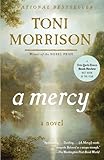
 Dr. Frazier begins by emphasizing “ecocriticism’s appalling lack of diversity” and recognizing that Black women thinkers have always developed their own understandings of ecological interconnectedness, which “center the health, well-being, and sustainability of Black, African-descended women.” She offers a variety of examples including Toni Morrison’s A Mercy and LaToya Ruby Frazier’s photo project “Flint is Family.” Ashley Jones’s poetry collection echoes the thesis of Dr. Frazier’s manifesto, bringing an ecocritical perspective to southern Black womanhood. With titles like “In Freeland, All the Beaches are Owned,” and “To the Men Who Made Sure I Knew They Did Not Love Me,” the collection centers difficult relationships—Christianity as a source of community, reparations as one means of accountability, family as a source of love and grief, and self-love as a final victory.
Dr. Frazier begins by emphasizing “ecocriticism’s appalling lack of diversity” and recognizing that Black women thinkers have always developed their own understandings of ecological interconnectedness, which “center the health, well-being, and sustainability of Black, African-descended women.” She offers a variety of examples including Toni Morrison’s A Mercy and LaToya Ruby Frazier’s photo project “Flint is Family.” Ashley Jones’s poetry collection echoes the thesis of Dr. Frazier’s manifesto, bringing an ecocritical perspective to southern Black womanhood. With titles like “In Freeland, All the Beaches are Owned,” and “To the Men Who Made Sure I Knew They Did Not Love Me,” the collection centers difficult relationships—Christianity as a source of community, reparations as one means of accountability, family as a source of love and grief, and self-love as a final victory.

 Detransition, Baby by Torrey Peters and Luster by Raven Leilani
Detransition, Baby by Torrey Peters and Luster by Raven Leilani
Two lyrical, entertaining books by authors who write sex with a detailed nonchalance I admire and hope to emulate. Both novels describe relationships I haven’t seen in fiction before. Both approach polyamory though neither directly invokes that framework. I was delighted by the dynamism and beauty and messiness of the relationships these characters create for themselves.


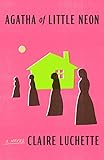 Last, in the spirit of relation—between characters, between people, between books—I want to note three novels I read this year by talented writers I feel grateful to count as friends: Alex McElroy’s thought-provoking The Atmospherians, Daphne Andreades’s forthcoming, deeply seen Brown Girls, and Claire Luchette’s poignant, yearning Agatha of Little Neon.
Last, in the spirit of relation—between characters, between people, between books—I want to note three novels I read this year by talented writers I feel grateful to count as friends: Alex McElroy’s thought-provoking The Atmospherians, Daphne Andreades’s forthcoming, deeply seen Brown Girls, and Claire Luchette’s poignant, yearning Agatha of Little Neon.
More from A Year in Reading 2021 (opens in a new tab)
Don’t miss: A Year in Reading 2020, 2019, 2018, 2017, 2016, 2015, 2014, 2013, 2012, 2011, 2010, 2009, 2008, 2007, 2006, 2005









